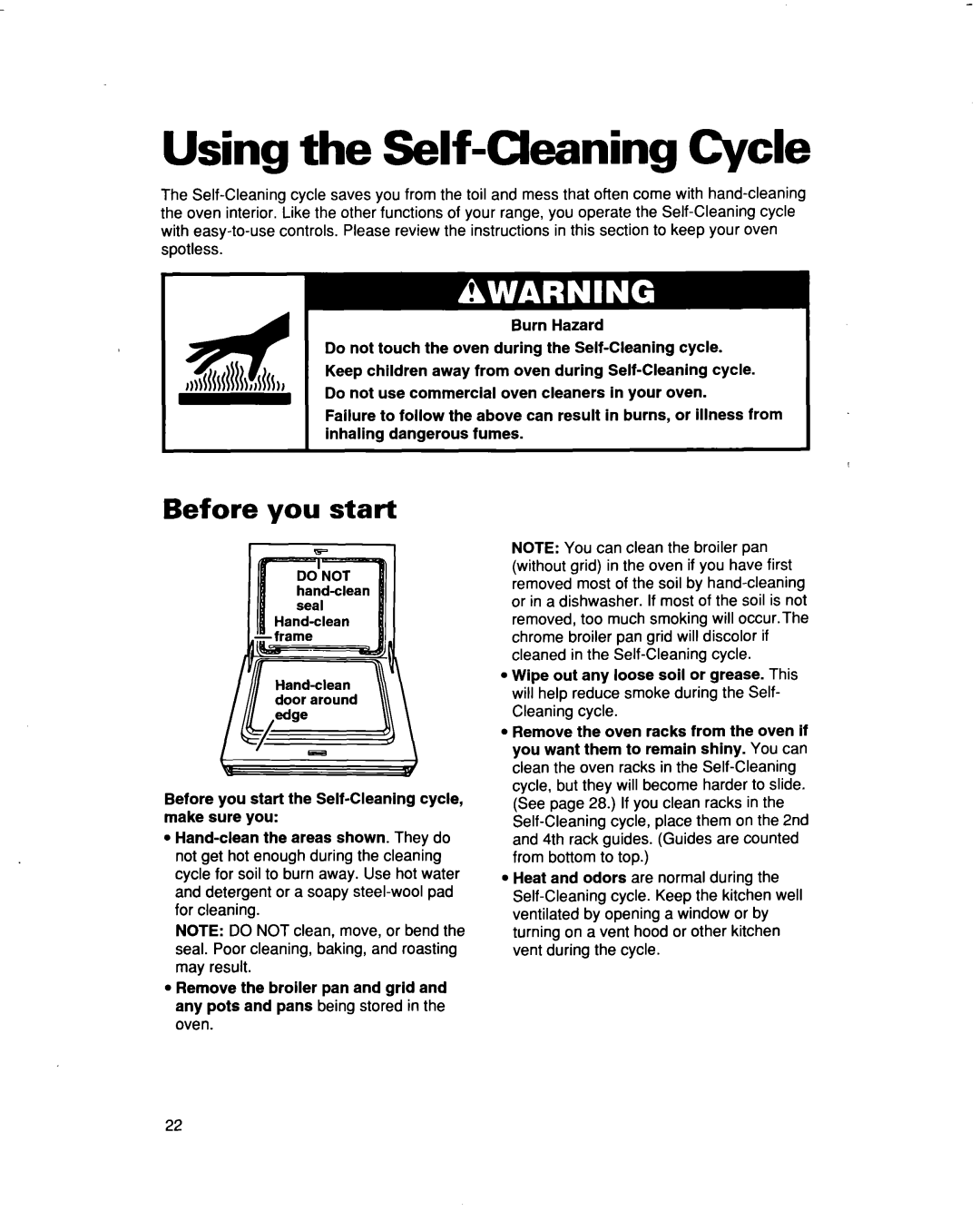Using the Self-Cleaning Cycle
The Self-Cleaning cycle saves you from the toil and mess that often come with hand-cleaning the oven interior. Like the other functions of your range, you operate the Self-Cleaning cycle with easy-to-use controls. Please review the instructions in this section to keep your oven spotless.
| Burn | | Hazard | | |
Do not touch the oven | during | the Self-Cleaning | cycle. |
Keep children away from oven | during Self-Cleaning | cycle. |
Do not use commercial | oven | cleaners in your oven. | |
Failure to follow the above can result in burns, or illness from |
1 inhaling dangerous fumes. | | | | I |
Before you start
Before you start the Self-Cleaning cycle, make sure you:
l Hand-clean the areas shown. They do not get hot enough during the cleaning cycle for soil to burn away. Use hot water and detergent or a soapy steel-wool pad for cleaning.
NOTE: DO NOT clean, move, or bend the seal. Poor cleaning, baking, and roasting may result.
l Remove the broiler pan and grid and any pots and pans being stored in the oven.
NOTE: You can clean the broiler pan (without grid) in the oven if you have first removed most of the soil by hand-cleaning or in a dishwasher. If most of the soil is not removed, too much smoking will occur.The chrome broiler pan grid will discolor if cleaned in the Self-Cleaning cycle.
Wipe out any loose soil or grease. This will help reduce smoke during the Self- Cleaning cycle.
Remove the oven racks from the oven if you want them to remain shiny. You can clean the oven racks in the Self-Cleaning cycle, but they will become harder to slide. (See page 28.) If you clean racks in the Self-Cleaning cycle, place them on the 2nd and 4th rack guides. (Guides are counted from bottom to top.)
Heat and odors are normal during the Self-Cleaning cycle. Keep the kitchen well ventilated by opening a window or by turning on a vent hood or other kitchen vent during the cycle.

